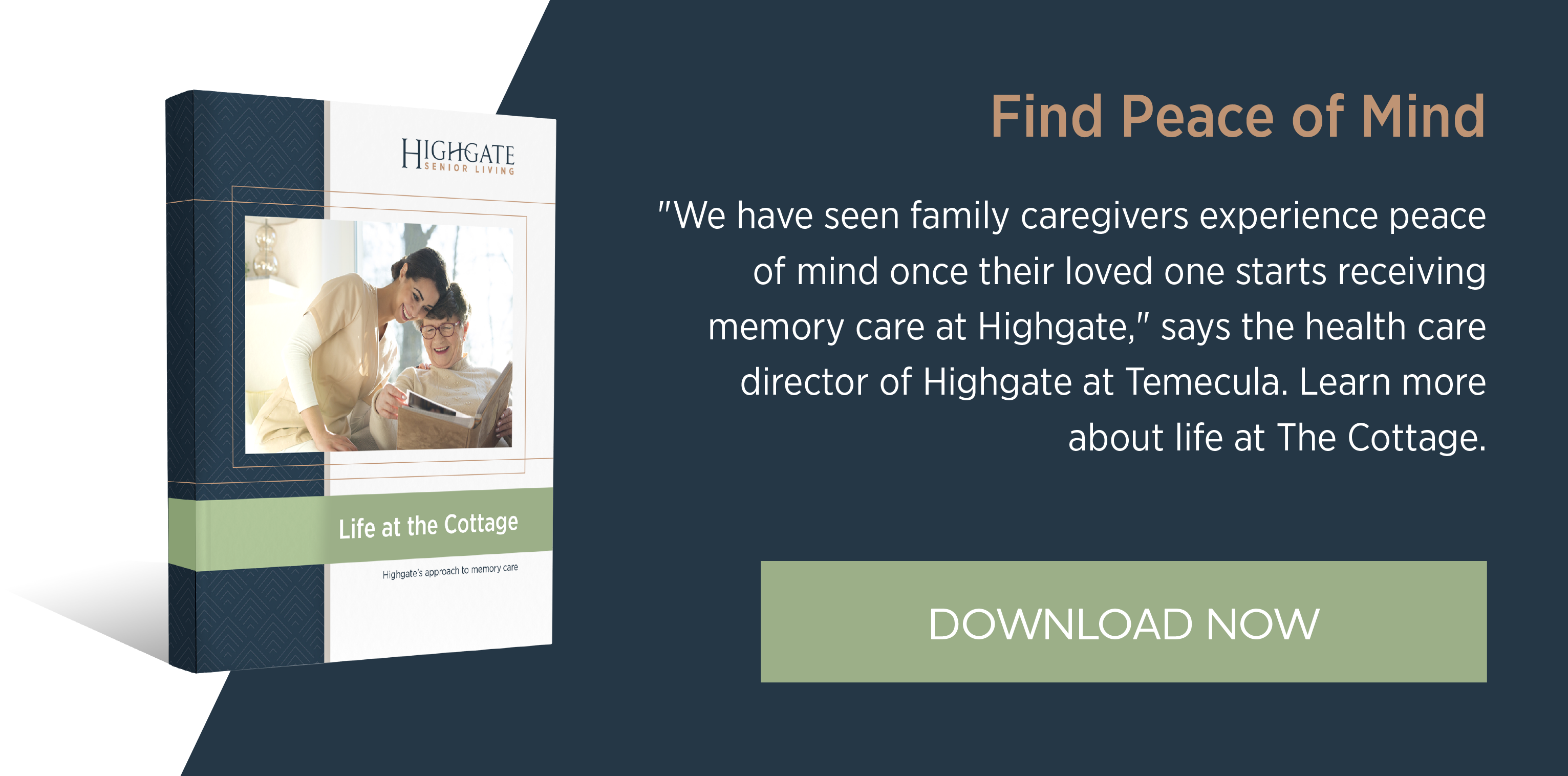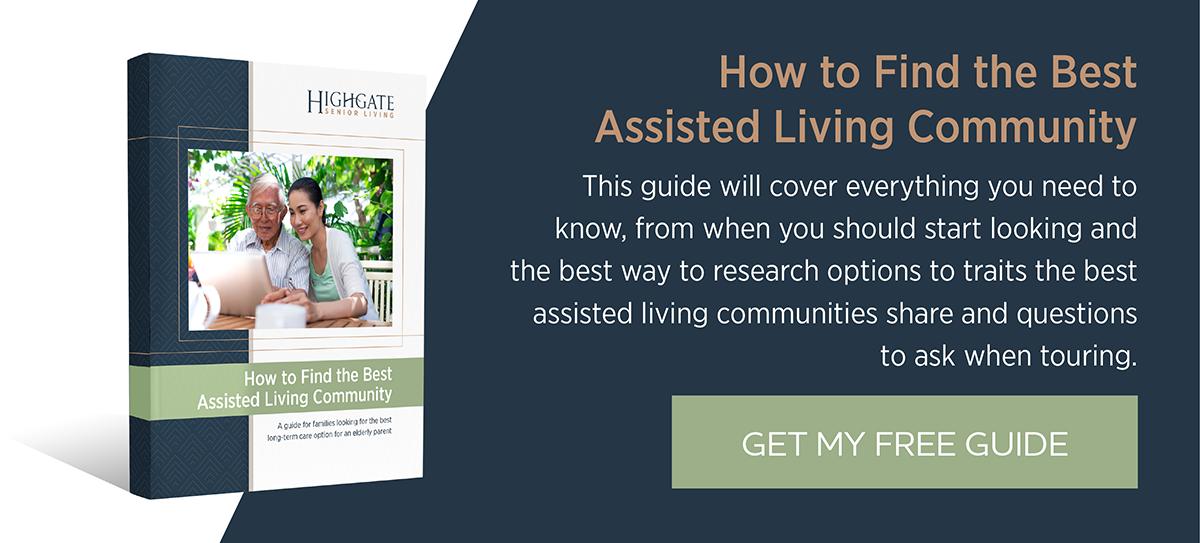
Assisted living options vary widely: Some communities are in small homes with just a few residents. Others are in high-rise apartment-style buildings with hundreds of residents. Some only provide meals, basic housekeeping, and help with the activities of daily living. Others go above and beyond these services and offer transportation, holistic care, and memory care. With so many options, knowing what to look for in assisted living can be overwhelming.
Why There Is No Standard
Unlike nursing homes, assisted living communities aren’t regulated nationally. Instead, each state has its own laws, regulations, and licensing standards for assisted living communities.
On top of that, many states have a tiered system of licensing, and not all assisted living communities invest in programming that exceeds the state minimum requirements. That means that one community might only be licensed to provide light personal care while a community down the street with a higher degree of licensing can provide for those who need help eating or have cognitive impairment or memory loss.
For example, in Montana, Highgate Senior Living has the Category A, B, and C licenses, which means the communities can help people who are completely dependent on care providers and team members for more than four activities of daily living.
“That’s more than the care you’ll receive in a nursing home,” says Marlena Azure, Community Relations Coordinator at Highgate at Great Falls. “There are a lot of communities that only have A licensing, so they’re not able to help a lot of people. With our nurse here seven days a week, we can take on people with complex medical conditions, such as sliding scale insulin. We’re able to help so many different people no matter the level of care. It’s not often that I have to tell families we can’t meet their loved one’s needs here.”
When looking for an assisted living community for yourself or a loved one, it’s so important to think about what kinds of assistance and/or medical care you or your loved one needs now as well as what additional care may be needed in the future.
Beyond addressing care needs, many assisted living communities offer social, educational, and wellness activities that support residents living meaningful and fulfilling lives. But again, the breadth and depth of each community’s lifestyle experience can vary dramatically. This key aspect of assisted living is often overlooked by families who are in the process of considering various assisted living options.
What to Look for in Assisted Living
To make sure you find the best fit for you or a loved one, here’s a closer look at important features to consider when looking for an assisted living community.
1. A High-Quality Dining Program
You need food for survival — and that’s what some assisted living communities offer: bland, institutional fare served on a hospital tray in a carpeted, stodgy cafeteria.
Other communities have recognized that the food residents eat is more than a meal: Eating nutritious food can make you feel better, savoring delicious food can make you feel happier, and sharing meals with others can make you feel connected to your community. At these communities, you’ll find a full-service restaurant, a menu with options, and made-from-scratch food.
Highgate, for example, hired Khalid Iraqui to oversee its dining program. A chef with over 20 years of experience at high-end restaurants and hotels, including the Four Seasons Hotel and Ritz-Carlton in Paris, Iraqui is committed to making the most nutritious and delicious food for his residents and turning mealtime into an experience.
“It’s not just about getting people fed,” says Britt Kane, Community Relations Coordinator at Highgate at Bellingham. “It looks beautiful. It feels upscale and high-quality. It’s about the experience, not just the fuel.”
2. A Holistic Approach to Care
Some communities take a conventional approach, relying on medicine and physical interventions to care for residents and their physical health.
Other communities take a more holistic approach to care. By getting to know each resident as a whole — mentally, physically, and emotionally — these communities find ways beyond traditional medicine to keep residents feeling healthy and fully engaged in life.
Holistic health care doesn’t replace the need for conventional health care practices. Instead, it incorporates the use of natural products such as tea, meditation, massage, aromatherapy, and other forms of complementary treatment.
“Our physical state affects our spiritual state, and our spiritual state affects our mental state,” says Vanessa Rauser, a Registered Nurse and the Assistant Executive Director at Highgate at Bozeman. “When out of balance, spiritual or mental states can cause physical ailments, such as pain or decreased mobility. Physical symptoms can cause poor long-term outcomes. The holistic approach increases health, and with the increased health, we can support our residents while they live an active, long life in good health.”
3. A Unique Activities and Recreation Program
When you walk into an assisted living community, you might expect to see some seniors playing Bingo. And at some communities, you probably will. Not every community has the budget to invest in a variety of other activities and outings that cater to the many unique interests their residents have.
At other communities, you’ll see ziplining, hot air balloon rides, and trips to national parks alongside Bingo, sing-alongs, and exercise. These communities understand the importance of connecting residents with other residents who have similar interests and offering events and activities that give them purpose and meaning — whether it’s meditation, worship, volunteering, gardening, exercise, art, community, or something else
“We spend a lot of time, energy, and effort talking about, thinking about, and programming to allow residents to continue to live a life of purpose each day,” says Marjorie Todd, Chief Operating Officer at Highgate Senior Living. “Our in-depth personal interviews with each resident allow us to identify what it is that really makes them feel valuable and important and needed. Every thread of our programming calendar is rooted in what gives each resident a sense of purpose.”
4. A Way to Get Around
Many people in assisted living can and do remain very active in the larger community. But if your loved one has stopped driving, it can be hard to get around.
That’s why some communities coordinate transportation to hairdressers, shopping centers, religious services, outings, and many other daily activities, even on short notice. These communities understand that transportation enables residents to live more independently and prevents feelings of isolation.
A community that offers transportation services ensures that you or your loved one will be able to continue enjoying the activities you’re accustomed to.
5. A Memory Care Community
If residents are in the early stages of dementia, assisted living communities can provide sufficient care. But dementia is a progressive disease, which means they will eventually need the specialized care and more intensive support offered by a memory care community.
Memory care communities can take many forms and exist within various types of residential care, including assisted living communities, but typically include trained staff, specialized activities, and the ability of staff to care for residents with behavioral needs.
It’s much easier to transition between care levels when a single community offers more than one type of care. However, not all assisted living communities offer services designed for people with memory loss. If you or your loved one will eventually need the specialized care that a memory care community can provide, look for a community that offers assisted living and memory care on one campus.
Finding the Best Assisted Living Community
With more than 28,000 assisted living communities in the U.S., looking for the right one can seem overwhelming, but it doesn’t have to be. The key is to start your search early.
For more information about how to research options in your area and questions to ask during the search process, download our eBook How to Find the Best Assisted Living Community.







